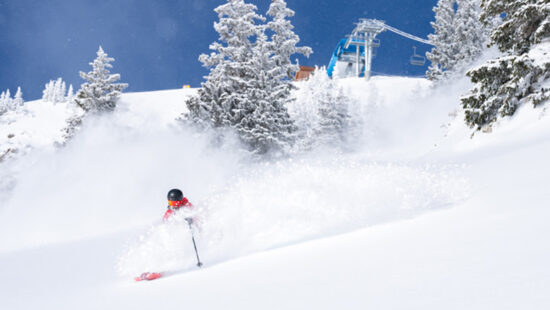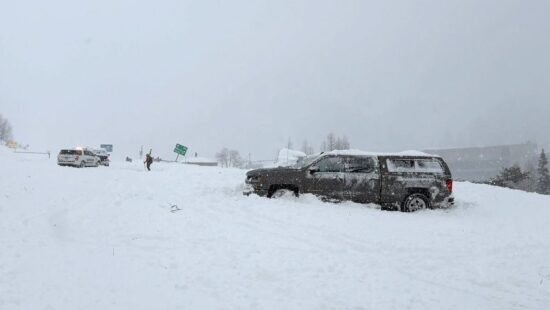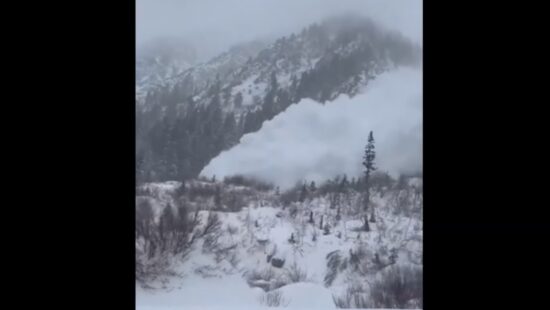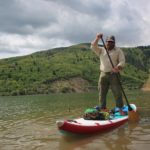Business
Paid parking has created a more manageable Alta
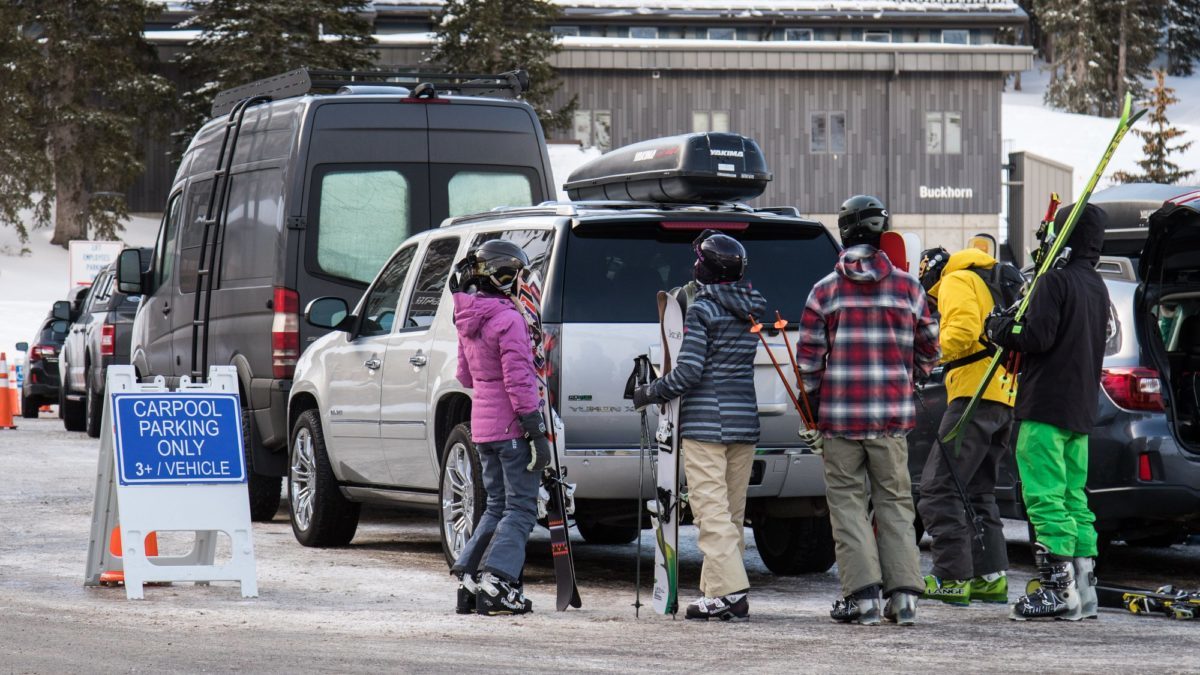
Alta’s ambition to “restore the weekend and holiday experience” has come to fruition for qualifying pass holders. Photo: Alta Ski Area
ALTA, Utah — Snow enthusiasts affectionately refer to Little Cottonwood Canyon (LCC) as “the epicenter of the universe.” The reference pays homage to the unparalleled powder skiing and the dramatic granite cliffs and peaks that form many iconic ski lines. The name is also a nod to the skiing pioneers who laid the foundation of modern-day extreme sports in LCC.
In December of 2021, in response to the ski season’s weekend and holiday chaos, Alta resort (Alta Ski Lifts Company [ASL]) implemented a parking reservation system. The parking solution initially generated a flurry of opposition from Salt Lake residents and Utah locals accustomed to free parking in upper LCC. Over a month into the required reservations, some users are changing their tune. The registration system has successfully aided in mitigating canyon mayhem, and skiers are relishing fewer crowds on weekends and holidays. Alternative paid parking considerations include acknowledging marginalized groups and attention to how ASL will allocate parking revenue.
The parking reservation system requires payment to access public lands. Upper LCC land use agreements allow ASL to charge for parking. Almost all the land in Alta belongs to the United States Forest Service (USFS). ASL utilizes and maintains USFS lands through a Special Use Permit (SUP).
The Town of Alta (TOA) is a municipality of the state of Utah, whereas ASL is a privately owned corporation.
“Almost all of the public parking in Alta is on National Forest System land that is within the US Forest Service Special Use Permit to Alta ski area [ASL],” said Chris Cawley, the assistant town administrator at the TOA. “The ski area built those parking lots, and they pay to maintain them… They really get to dictate to a very significant extent how parking is available.”
ASL and the TOA control about 1,900 parking spots. ASL maintains and operates approximately 90% of the parking, and the TOA manages the remaining 10%. So, when ASL announced its plan to implement a reservation system in spring 2021, it was clear that the TOA also needed to develop a parking game plan. “Big changes were coming, and we needed to manage the small fraction of remaining parking in town,” Cawley said.
“The program itself is a response to the ski area [ASL] reservation program. Demand for vehicle parking within the town has increased significantly to the point that available space is not sufficient, particularly on weekends, holidays, or fresh snow days.”
On January 6, 2022, ASL and the TOA reached a Memorandum of Understanding (MOU), which outlines the plan for parking collaboration between the two parties. The MOU illustrates a shared perspective of ASL and TOA.
The agreement breaks down parking into areas controlled by ASL and TOA. In addition to the parking lots and majority of the parking spaces (parking map), ASL controls half of the parking on the north side of SR 210 through their SUP. The TOA recently obtained a SUP permit for the remaining parking on the north side of the highway.
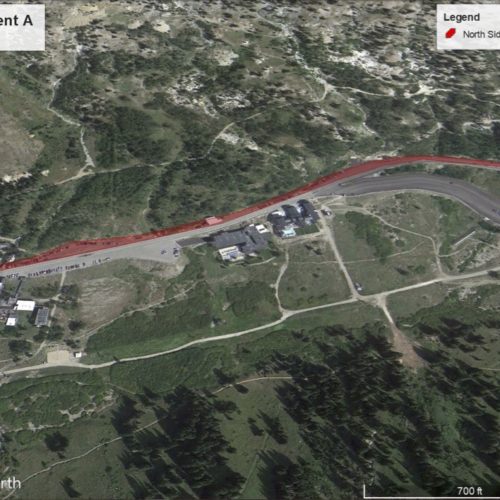
“The town’s role has been to develop a program to manage parking via a permit requirement in areas north of the highway. Many of those are historically public overnight areas,” Cawley said. “We [TOA] agreed to consider these parking areas a pool, and to offer permits for the use of residents and property owners, folks who relied on TOA managed overnight parking in the past.”
“The town is locking the rest of it [parking] down in order to protect something for people who rely on on-street public parking to access their workplaces and their property,” he added.
The TOA also controls select parking east of the Alta Wildcat parking lot and west of the Deep Powder House Ski Shop on the south shoulder of SR 210. These spots are the sole parking options for early morning (6:00 am to 8:00 am) backcountry user access.
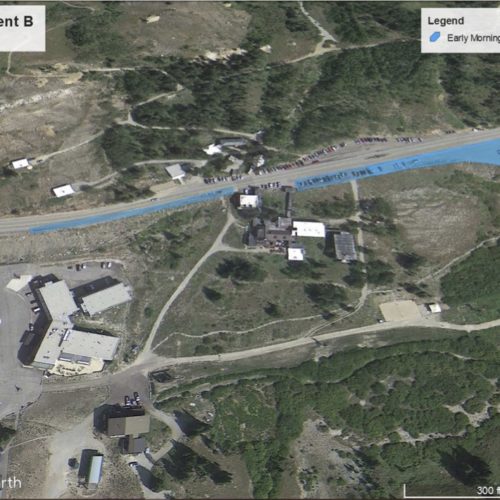
The MOU and ASL’s website indicate that a parking reservation system responds to unsustainable recreation growth. The MOU states, “Implementing managed parking cooperatively between ASL and TOA will consolidate parking needs into designated areas, facilitate parking management, including snow removal, overnight parking, and reduce visitor parking problems, and encourage carpooling and the use of public transit.”
The ASL website implies that parking reservations provide solutions to a handful of problems, including; guaranteed parking before commuting up the canyon, reducing early morning traffic congestion, and managing the ski resort experience by limiting the number of skiers. Essentially the number of recreationists is beyond what the canyon can handle.
“Trends and visitation to Alta for all reasons are wholly unsustainable…. If the rate of change that unfolded between two winters ago and last winter had proceeded this winter, it would have been beyond unmanageable up there.”
“While it might not be shaped the way some of us would prefer,” Cawley said. “The Alta ski area [ASL] program has yielded a more manageable Alta. Last winter was insane, and it does not feel insane this winter.”
ASL’s parking plan successfully reduces pandemonium on peak ski days. The quandary then becomes how the parking system negates crowds and which groups feel the brunt of the changes? The answer lies in logistics.
Parking from 8:00 am to 1:00 pm on Saturdays, Sundays, and holidays require a $25 reservation. Additionally, backcountry users must make $15 reservations to park Monday through Friday (non-holiday) between 6:00 am and 8:00 am, and $25 reservations to park weekends and holidays from 6:00 am to 1:00 pm.
Individuals who hold a “qualifying” Alta or Alta-Bird season pass receive complimentary parking codes. These pass holders make a no-cost parking reservation to park during peak periods. People who purchase a lift ticket through Alta’s website receive a $10 parking code.
Alta’s ambition to “restore the weekend and holiday experience” has come to fruition for qualifying pass holders. Unfortunately, for the people visiting upper LCC without a “qualifying pass,” the opportunity to soak up the majesty of the mountains becomes less accessible. In truth, for some pass holders, a $25 price tag isn’t worth a second thought.
Recreational users who come to hike, snowshoe, bird watch, picnic, or revel in the majestic mountain air, all traditionally “free” activities, are the people taking the hardest hit. For an individual or family without the means to buy ski equipment, let alone a “qualifying pass,” a $25 price tag restricts access to upper LCC to the more affluent.
The ASL and TOA initiative to encourage using public transit via parking reservations is effective. Fortunately, UTA keeps a consistent bus schedule throughout the ski months, and folks who want to avoid or can’t pay the $25 parking fee can utilize public transit at a fraction of the cost. Additionally, on January 8, in response to the parking situation, Wasatch Backcountry Alliance and Utah Mountain Shuttle launched an experimental, complimentary shuttle service to upper LCC. The free shuttle is catered to backcountry users, encourages voluntary donations, and utilizes park and rides while offering five pick-up and five drop-off times.
An uptick in carpooling and public transportation use benefits all canyon users by reducing traffic, congestion, and pollution. These are welcome changes. Unfortunately, they come at the cost of further marginalizing the already fringed recreational users. People who rely on no-cost access to public lands as a source to refresh their souls.
The other concern; how will ASL allocate the revenue generated from parking permits? Cawley explains that the nominal revenue generated for the TOA will go towards funds for snow plowing and the Marshal’s office. However, since the TOA controls a small fraction of the parking, it’s safe to assume the ASL will generate much more significant revenue.
Will ASL use parking revenue to build up infrastructure for recreational users not spending money at their resort? Unfortunately, the income from ASL’s parking system will likely go into the pockets of ASL shareholders. So, sadly, there is no indication that ASL will utilize parking revenue to aid the USFS in building public infrastructure. That is unfortunate because there is a dire need for a winter public restroom for non-resort users.
Access issues and allocation of funds aside, charging for parking is common in high-use recreation areas and likely to become more predominant in the Wasatch. A look to Zion in Springdale, Utah, or Breckenridge, Colorado, provides examples of managing crowds through paid parking.
“Charging for parking is a common means of trying to affect demand for a limited supply of something,” Cawley describes. He alludes that charging for parking at Alta, “Is a bellwether of what’s going to happen elsewhere in the range in the future. The future of recreation access in the Wasatch is that it’s going to cost people more money and be more restrictive than it is now.”
If Cawley’s prediction is correct, parking will be an additional cost to recreating. The pay for parking initiatives effectively reduce traffic and parking-related issues and encourage public transit use. On the flip side, folks who turn to the “epicenter of the universe” as a “free” public place for recreation and spiritual revival will have to seek an alternate venue.
Appreciate the coverage? Help keep Park City informed.
TownLift is powered by our community. If you value independent, local news that keeps Park City connected and in the know, consider supporting our newsroom.















